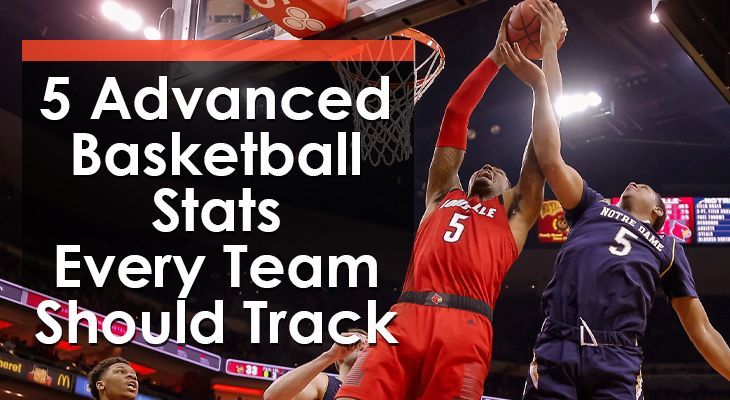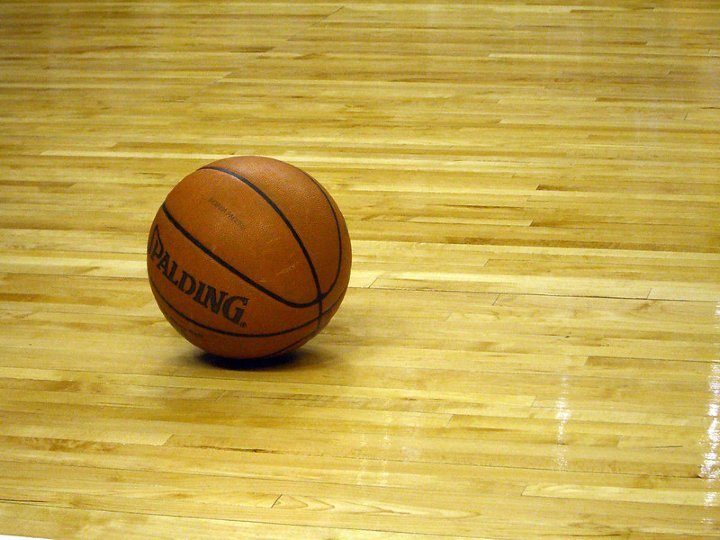
I have a love / hate relationship with basketball stats.
On one hand, I agree with Marc Gasol who said:
"Stats are killing the game of basketball. A lot of things happen that you can't measure in stats."
While on the other hand, I can’t deny that -- if used properly -- the data produced from tracking basketball statistics can give your team a major competitive advantage.
That’s why so many basketball coaches rave about services like Hudl.
Analytics can help you figure out how to get the maximum performance out of your team.
Here are 7 basketball stats teams should consider tracking…
1. Points in the Paint
Shots made inside the key are by far the most efficient shots in basketball.
It’s not surprising that analytics-driven offenses try to generate as many of these as possible.
If you want to win games, looking to create more layup (or dunk) opportunities for your team is a great place to start focusing your attention.
This stats also gives you insight into how well your team moves the ball, as points in the paint are often generated as the result of smart ball-movement and penetration, which forces the defense into multiple rotations and closeouts.
On the other end, you must prevent your opponent from getting these easy paint shots.
2. Points Off Turnovers
Turnovers aren’t good, especially if they result in an immediate basket for the other team.
If you’ve seen a point guard get stripped just as they cross half-court, leading to a wide-open fast break layup for the defender, you’ll know these plays are big momentum-builders.
Points off turnovers hype up the scoring team, get the crowd going, and demoralize the team and player who committed the turnover.
That’s why you should emphasize ball security and track this basketball stat for both teams.
3. Assist to Turnover Ratio
Continuing the focus on ball security, tracking each player’s assist-to-turnover ratio is a good idea for coaches who want to play smart + effective basketball.
This ratio tells you how well your team takes care of the ball compared to how often they lose it.
The calculation is simple:
Divide the number of assists with the number of turnovers.
You can do this for both individual players and the team as a whole.
Different player roles have different goals for this ratio:
> Point guards should strive for a 3-1 ratio
> Wings should strive for a 2-1 ratio
> Centers should have at least a 1-1 ratio
The problem to keep in mind with this metric is that outside factors can heavily influence it.
Your offense can generate plenty of open shots but those shots might not fall, or you can get a few open shots but hit an absurdly high percentage of them.

4. Percentage of Assisted Field Goals
If you want to know how well your players share the ball, this is a good stat to track.
It’s easy to calculate, just divide the number of assists with the number of made field goals.
The higher this percentage, the better.
But just like the assist-to-turnover ratio described above, it’s not immune to outside influences.
A low percentage means that your team is either not hitting shots or is highly dependent on isolation scoring, and that’s not a train you can ride very far.
5. On / Off Numbers
This one can get a bit complicated...
To help you understand, I first need to explain what offensive and defensive ratings are.
Respectively, they’re the numbers of points your team scores or allows per 100 possessions.
Your team’s “net rating” is simply the difference between your offensive and defensive ratings.
The same concept can be applied to individual players.
On / off numbers simply compare your team’s offensive and defensive ratings when a certain player is in the game to the numbers when that same player is on the bench.
The change in your team’s net rating when a player is on the court compared to the net rating when they’re off the court is called the net rating swing, and it can be positive or negative.
This information is useful for determining how individual players impact your offense and defense outside of traditional box score metrics.
Here’s an example of what on / off numbers can reveal:
A player who leads the team in rebounds and blocked shots might actually *hurt* the team when they’re on the floor.
Why?
Possible reasons can include: (1) they never box out, leading to a large number of offensive rebounds for the opposition, and (2) they frequently jump to block shots but are unsuccessful, resulting in easy shots for their opponent.
The player described above would have a negative net rating despite good individual stats.
Tracking on / off numbers for different lineups will also show you which players work best together, which is great to know towards the end of a close game.
What Other Basketball Stats Should You Track?
Along with the advanced stats, there are a wide range of basic statistics (box score stats) every coach should continually keep an eye on.
All of these can be tracked with pen and paper.
For example:
- Points
- Rebounds (offensive and defensive)
- Assists
- Steals
- Blocks
- Fouls committed
- Fouls drawn
- Turnovers
- Minutes played
- Free-throws (attempts and makes)
- Free-throw percentage
- Field goals (attempts and makes)
- Field goal percentage
- Three-pointers (attempts and makes)
- Three-point FG%
If the league you’re playing in doesn’t track these already, I recommend finding an assistant coach or parent who is willing to keep these statistics during the game so that you can review them during breaks or after the game.
If you don’t have that option, consider recording the game so that you can go back through it and record these statistics yourself.
When is it Appropriate to Start Tracking Basketball Stats?
This is a tricky question to answer...
While I don’t think statistics should be a big concern for any youth coach, having “evidence” to back up what you’re telling the team can be very helpful.
For example, tracking a team stat like points “points in the paint” and then sharing those numbers during a timeout can help convince the team they need to be more aggressive.
So I wouldn’t be against any coach who chose to do that.
If you coach at the high school level, you should definitely track all these basketball stats.
